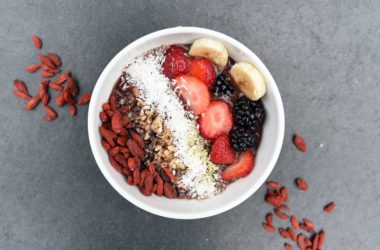Importance of Portion Control for a Healthy Diet
Portion control refers to the process of limiting the amount of food or drink consumed in a single meal or snack. Healthy eating habits and portion control are closely connected as eating excessively creates an imbalance in the nutritional intake and increases the risk of various health issues like obesity, diabetes and hypertension. Practising portion control is one of the essential elements of a healthy diet, and it benefits the body in multiple ways.
Benefits of Portion Control
Healthy eating habits and portion control help in managing weight, reducing the risk of chronic diseases, improving digestion and metabolism, and enhancing energy levels. Eating in moderation is the key to achieving a healthy and balanced diet. By practising portion control, intake of nutrients like vitamins, minerals, protein, carbohydrates and fats are maintained in an optimal proportion, promoting overall health and wellbeing.
Proportions are significant because consuming excess calories may lead to weight gain and an increased risk of diseases such as diabetes, cardiovascular disease and certain cancers. Smaller portion sizes assist in consuming fewer calories, which helps manage weight. When the food intake is in check, digestion improves, and the body consumes nutrients more efficiently. Portion control also helps in preventing overeating or consuming foods that are low in nutrient content.
How to Measure Portion Sizes
Measuring tools such as, cups, spoons and kitchen scales can be used to measure the portion sizes accurately. Everyday objects like the size of a palm, fist or tennis ball are effective references on portion sizes, making it easier for people to manage the amount of food they consume. The hand method is another useful way to measure portion sizes, where an individual’s hand is used to determine an appropriate portion size of protein, carbohydrates and fats. Pre-portioning food in packets is also efficient in establishing if the portion sizes are correct.
Portion Control Techniques
Mindful eating and eating slowly are the two techniques that drive individuals to increase their sense of fulfillment. Distractions like watching TV, reading or browsing through the phone while eating can influence consumption behaviour leading to overeating. It is essential to concentrate on the act of eating to discern the body’s hunger and fullness signals. Likewise, it is necessary to listen to the body’s cues and stop eating when satisfied.
Culinary Strategies for Portion Control
Preparing and cooking food mindfully can help in portion control. The use of smaller cookware and using measuring cups can significantly help in managing portions. Additionally, re-portioning leftover food instead of consuming everything in one sitting assists in achieving the desired portion sizes.
Practising Portion Control in Real-Life Situations
Choosing the smallest portion sizes available in restaurants and bringing along food that meets personal dietary needs while travelling is practical. For social events like parties, it is recommended to fill up on vegetables and smart snack options before consuming any food that may lead to overeating.
Frequently Asked Questions about Portion Control
The amount of food to be consumed in a single meal varies depending on the individual’s age, gender, weight and activity levels. However, general recommendations that one can use as a guide is to consume half of the plate with fruits and vegetables, a quarter of the plate with protein and a quarter of the plate with whole grains. Counting calories is not necessary if one intends to maintain a meal balance. The portion size is different for children and adults, as children require fewer calories compared to adults and therefore have smaller portion sizes.
Conclusion
In conclusion, practising portion control is a crucial part of achieving a healthy diet. Implementing these techniques into everyday life can lead to long-term health benefits, including weight management, improved digestion and reduced risk of chronic diseases. Creating healthy eating habits and monitoring serving sizes promotes the consumption of nutrient-dense foods and avoids unhealthy eating patterns. By consuming mindfully and respecting the body’s hunger and fullness signals, an individual is likely to achieve their ideal caloric intake and ultimate nutritional goals.





